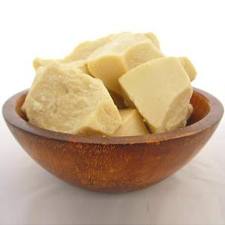
What Causes Stretch Marks?
Stretch marks form when the skin is overstretched. This commonly occurs during pregnancy, especially in the abdominal area, as the growing fetus stretches the overlying skin tissue. As a result, small tears form. This is essentially what stretch marks are – damaged tissue that’s been stretched too far. In their early stages, they’re usually red or purple in color, but they gradually lighten to a white or silver color.
Pregnancy isn’t the only thing that causes stretch marks. If you gain significant weight for whatever reason, it can lead to stretch marks. Bodybuilders are susceptible to stretch marks as they build muscle and stretch the overlying tissue. Hormonal fluctuations play a role too, especially in women. As with most things, genetics are a factor. Some people have better skin elasticity than others. People with healthy elastin may be more resistant to stretch marks.
Treating Stretch Marks – Does Cocoa Butter Help?
According to a study published in BJOG: An International Journal of Obstetrics and Gynecology, cocoa butter won’t improve the appearance of stretch marks that have already formed and does little to prevent them from showing up in the first place. So much for simple, inexpensive solutions.
So what does work? There are a number of products marketed for the treatment of stretch marks. Most contain one of several ingredients – vitamin E, an herb called Gotu Kola, or ingredients that stimulate collagen production in the deeper layers of the skin. Some small studies show weak evidence that vitamin E and Gotu kola could prevent the formation of new stretch marks, but they’re not a “cure” for ones that are already there. A product called Mederma derived from onions and marketed as a treatment for scars and stretch marks has shown some promise in animal studies but hasn’t been adequately tested in humans.
One topical treatment that does have some benefits, if you use it while the stretch mark is still “young,” is prescription-strength retinoids used to treat skin aging and acne. Retinoids like Retin-A boost collagen and elastin production. This may be why they improve stretch marks. Don’t expect dramatic benefits and it may take up to six months to see results.
So What Does Improve Stretch Marks?
Treatment with pulse-dye laser improves the appearance of stretch marks that are newer and still red in color, but it’ll require at least 2 treatments and sometimes up to 6 to the tune of around $400 per treatment. Once the mark has lost its color, your best option is fractional non-ablative laser treatment. You’ll need around 5 treatments at an average cost of about $500 per treatment.
Can You Prevent Stretch Marks?
There’s no sure way to prevent stretch marks other than avoiding gaining weight or becoming pregnant. Eating a healthy diet with enough vitamin C, important for collagen production, may offer some protection against stretch marks as well as not smoking. Smoking breaks down elastin and reduces the skin’s ability to “bounce back” and resist tearing. Avoiding sun exposure may also help since ultraviolet light breaks down collagen and elastin, making the skin more susceptible to damage.
The Bottom Line?
Cocoa butter is a good moisturizer but it won’t cure stretch marks. Your best bet is to prevent them by keeping your weight stable. Once they’ve formed, early ones may respond to prescription-strength retinoids or pulse-dye laser treatment. Older ones may be improved by fractional non-ablative laser treatments.
References:
Cosmetic Dermatology. Principles and Practice. Leslie Baumann, M.D. 2002.
BJOG: An International Journal of Obstetrics & GynecologyVolume 115, Issue 9.
J. Dermatol. Surg. Oncol. 1990 Mar; 16(3): 267-70.

